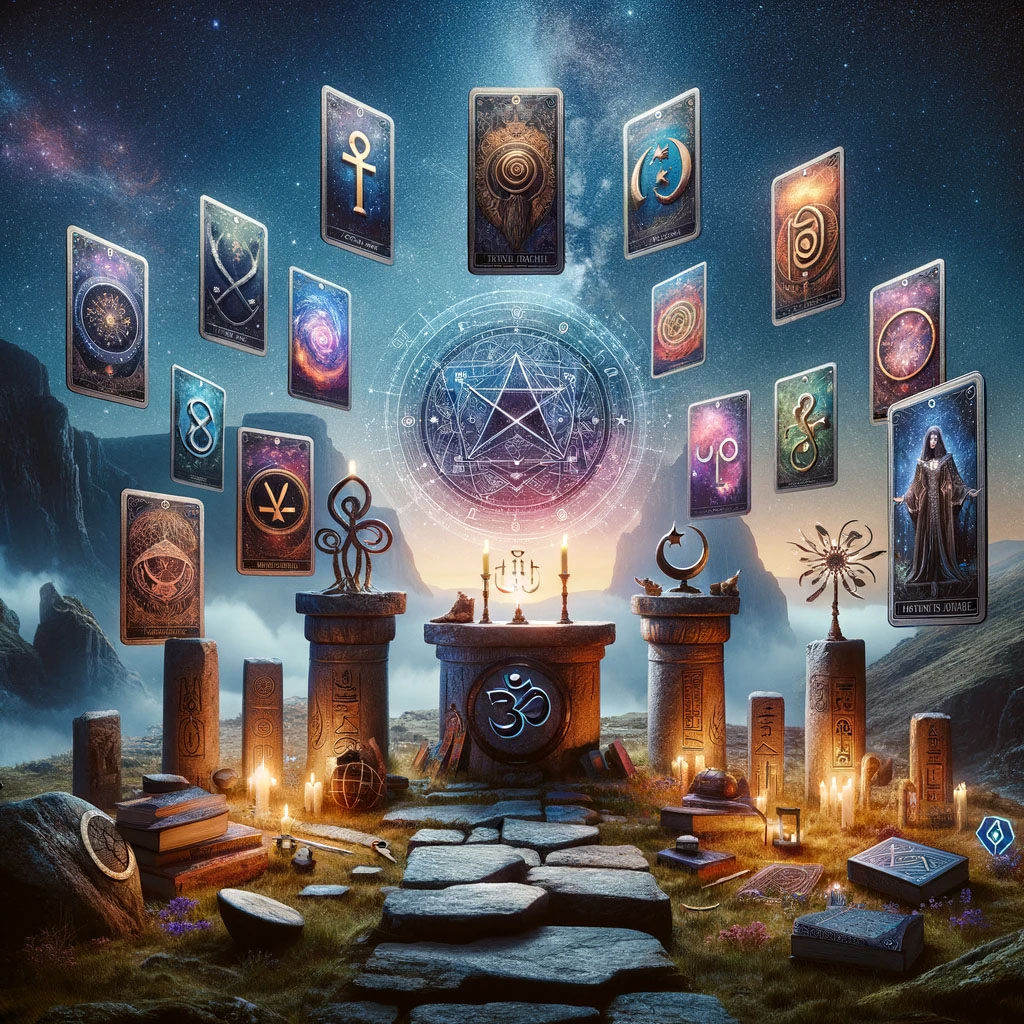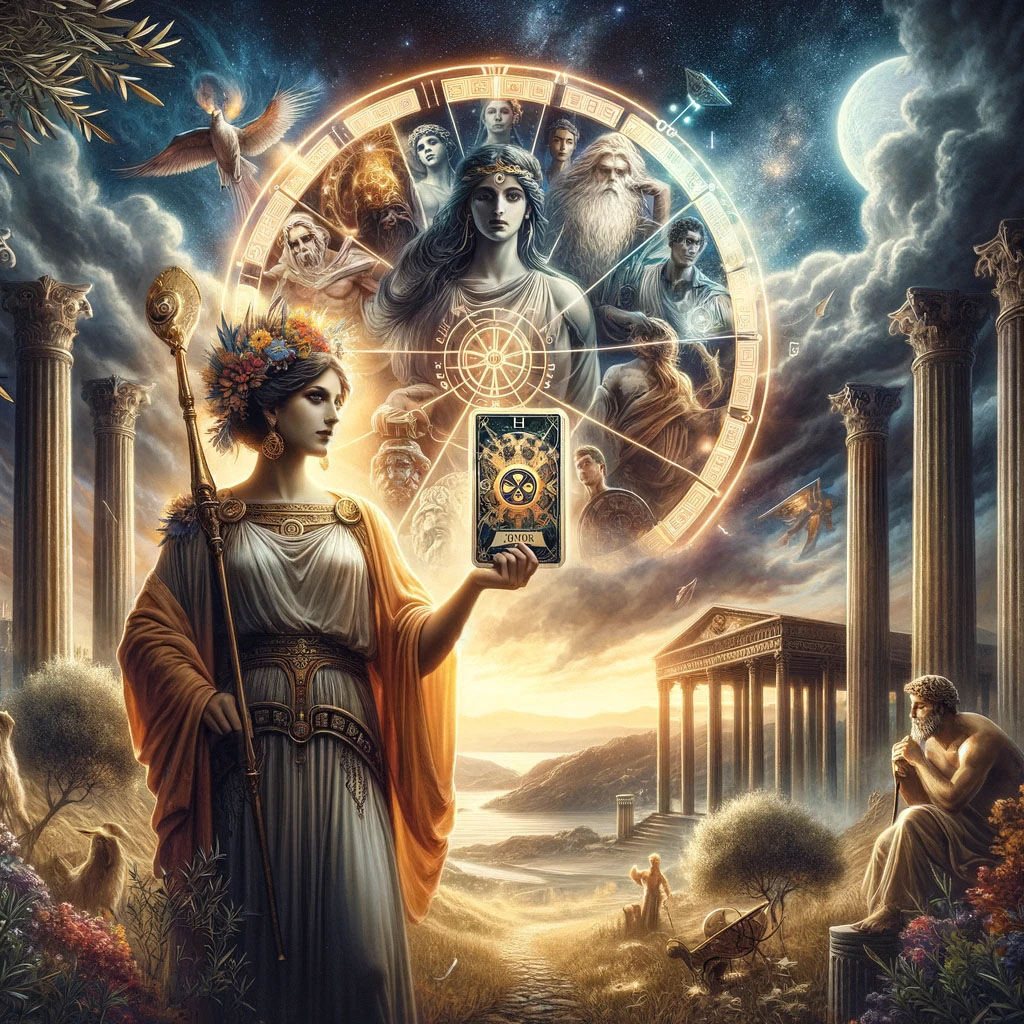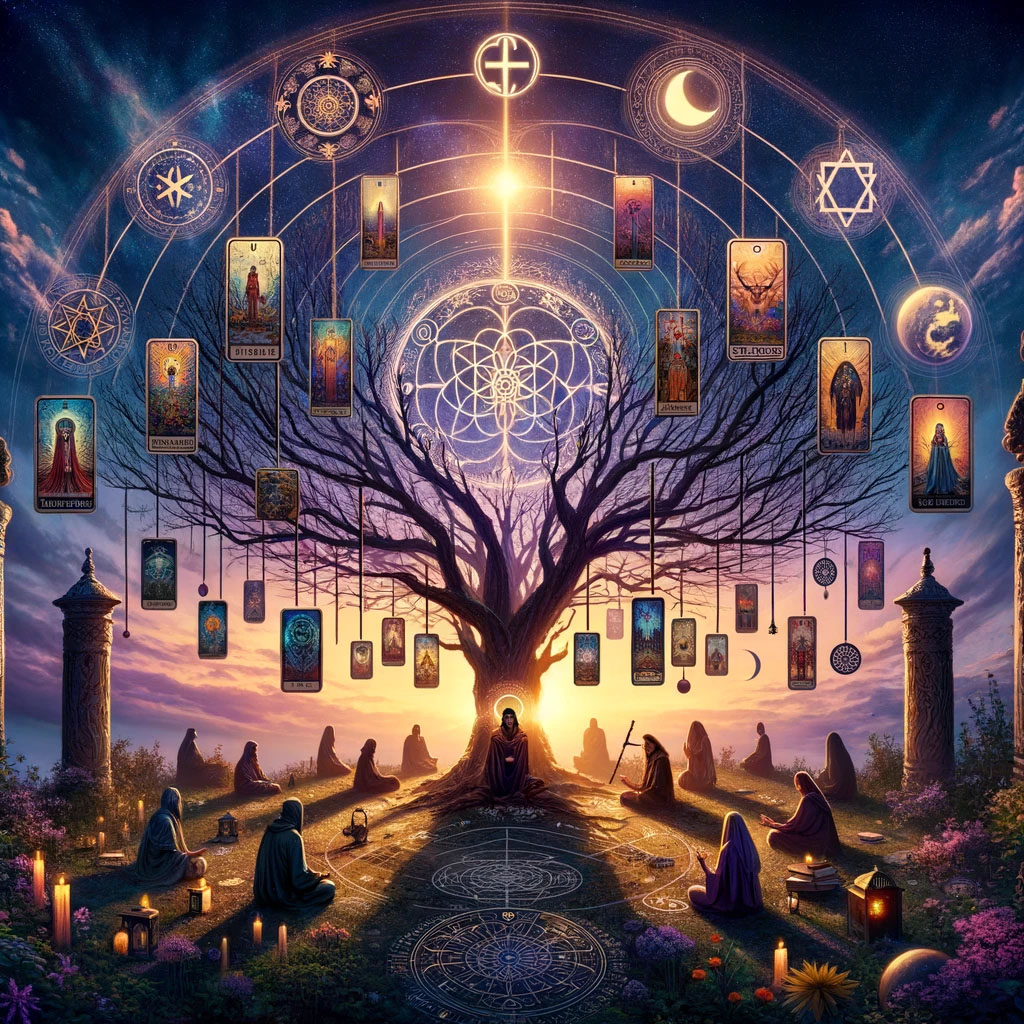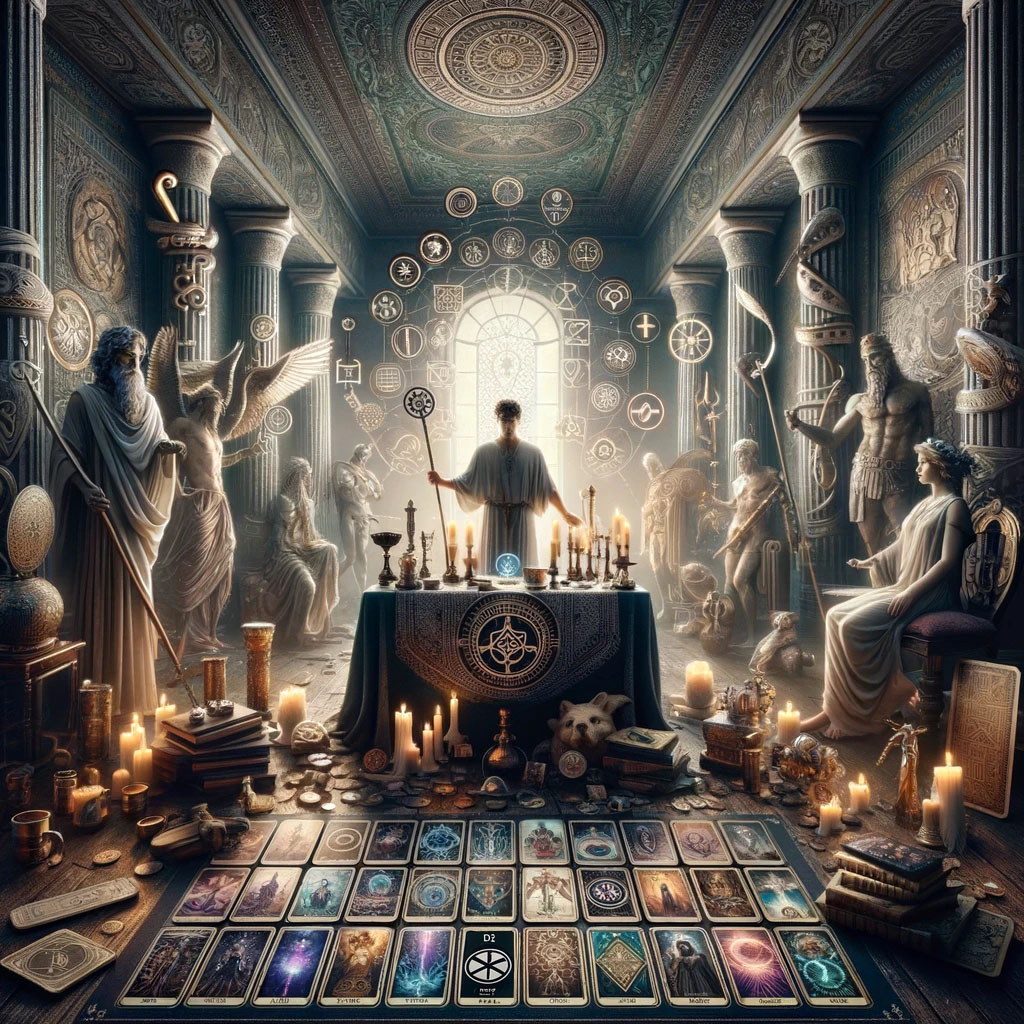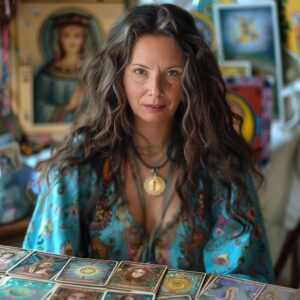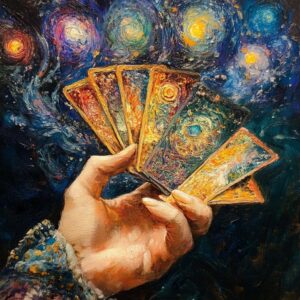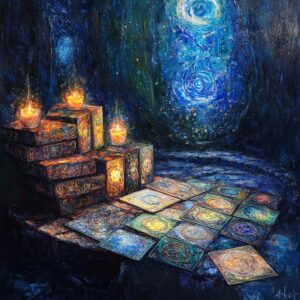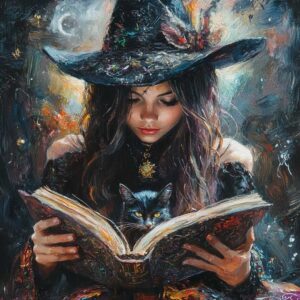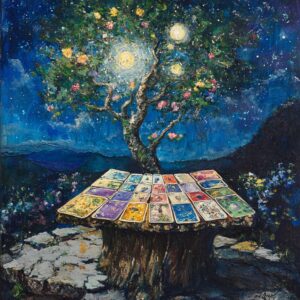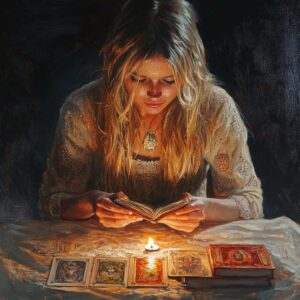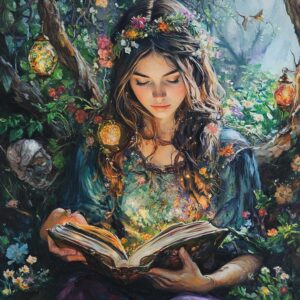Mythological Influences on Tarot
Tarot cards are rich with mythological symbols from around the world, lending them profound depth and meaning. Well-known mythological figures, such as Zeus, Aphrodite, Odin, and others, are reflected in various cards, giving them unique characteristics and interpretations.
For example, "The Emperor" card evokes the imagery of powerful mythological rulers like the Greek Zeus or the Roman Julius Caesar. "The High Priestess" card is often associated with goddesses of wisdom and knowledge, such as the Greek Athena or the Egyptian Isis. The "Death" card frequently carries symbols linked to mythologies of the afterlife, like Odin, the Norse god of death.
These influences are not coincidental but the result of Tarot's evolution over history, drawing from various cultures and religions. Many symbols in Tarot are universal, appearing across multiple cultures, further strengthening the connection between Tarot and ancient mythologies.
Exploring the mythological influences on Tarot opens a window into the deep symbolism and meaning of these cards. Understanding these connections enriches the experience of using Tarot, whether as a tool for fortune-telling or as a powerful instrument for personal and spiritual growth.
Greek Mythology:
The influence of Greek mythology on Tarot is particularly evident. Well-known mythological figures, such as Zeus ("The Emperor"), Aphrodite ("The Lovers"), Hermes ("The Magician"), and others, are reflected in various cards. Greek myths and stories also serve as a foundation for the interpretation of many cards. In the Minor Arcana, each card from Two to Ten forms part of a mythological story: the Wands suit is linked to the tale of Jason and the Golden Fleece, the Pentacles suit to the story of Daedalus and Icarus, the Cups suit to the story of Cupid and Psyche, and the Swords suit to the story of the House of Atreus.
Egyptian Mythology:
Egyptian mythological symbols, such as the Sphinx ("The Wheel of Fortune" and "The Chariot" cards) and the Ankh ("Justice" card), appear in several Tarot cards. The Death card often carries symbols related to the Egyptian gods of the afterlife, such as Anubis and Osiris.
Norse Mythology:
The Death card in Tarot often evokes mythological figures associated with death and the afterlife in Norse mythology, such as Odin and Hel. The World card frequently carries symbols linked to Yggdrasil and the Tree of Life in Norse mythology.
Other Mythologies:
Mythological influences from the cultures of India, China, Japan, and others can also be found in Tarot cards. The Star card, for instance, is often associated with goddesses of the sky and stars in various mythologies, such as the Sumerian Inanna (Venus) or the Hindu Astarte.
Exploring the mythological influences in Tarot opens a door to the deep symbolism and meaning of these cards. Understanding these connections enriches the experience of using Tarot, whether as a tool for fortune-telling or as a powerful means for personal and spiritual growth.
It is important to note that Tarot interpretation is open and flexible, with various approaches to interpreting mythological symbols. The connections between Tarot and different mythologies and cultures provide another tool for deep understanding of these cards, but ultimately, Tarot interpretation is personal and depends on the context and individual experience of each person.

